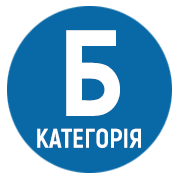USING “WORD CLOUDS” FOR LANGUAGE TRAINING OF FOREIGN MEDICAL STUDENTS
DOI:
https://doi.org/10.25128/2415-3605.22.2.11Keywords:
language training, educational-communicative interaction, foreign students of the medical faculty with English as language of instruction, professional-communicative competence, «word cloudAbstract
The article deals with the theoretical and practical aspect of using «word clouds» to create activities when teaching philological disciplines aimed at the formation of the professional and communicative competency (development of language and professional competences) of foreign students of the medical faculty whose language of instruction is English. It is worth mentioning that the tasks created using the «Word Cloud» technology integrate work with lexical material (lexemes, phrases, sentences) and controlled as well as free practice on producing utterances on professional topics, dialogue simulation according to various models (doctor – hypochondriac patient, doctor – inattentive patient, doctor – talkative patient, doctor – silent patient, doctor – hostile patient), which contributes to the implementation of speech behaviour tactics to achieve the communication goal, demonstrating a good command of the techniques aimed at establishing professional contacts. It is stressed that foreign students established logical and semantic connections between lexemes / phrases / sentences when working with «word clouds». Interactive situations described in the research are close to the real conditions of the professional activity of future specialists in the medical field, which reproduce the possibility of extensive communication in standard situations, as well as in communication conditions with elements of unpredictability, accompanied by a visual demonstration of educational information using «word clouds». Special attention is focused on the didactic possibilities of «word clouds» for teaching and learning philological disciplines as they are used in multiple variations, namely: 1) as a lexical minimum for transforming aphorisms / questions / dialogical units / the topic and content of the lesson; 2) as an algorithm for modelling communicative situations in accordance with professional activity, for writing cinquains; 3) as a tool for creating associative series (anatomical terminology, clinical terminology, diseases, symptoms, drugs, medications, painful conditions, etc.), instructions that establish the rules for medical assistance to the victim (based on key words), terminological dictionaries to learn and consolidate medical vocabulary on educational topics; 4) as a visual tool that contributes to the cognitive activity of medical students in terms of mastering skills in perceptive and productive types of speech activity in educational and professional communication situations, as well as to the formation of their intellectual and creative abilities. The conclusion is drawn that working with word clouds» created by the teacher/students, in combination with communicative tasks, contributes to the accumulation of linguistic and communicative experience, expanding of the active vocabulary, acquiring of phonetic, lexical and grammatical skills.
References
Аксакова Н. О. Особливості викладання гуманітарних дисциплін для здобувачів технічної освіти. Науковий часопис НПУ імені М. П. Драгоманова. Педагогічні науки: реалії та перспективи. Київ, 2021. Вип. 79. Т. 1. С. 5–9.
Васецька Л. І. Методика навчання професійного російського мовлення студентів-іноземців вищого медичного закладу: автореф. дис. … канд. пед. наук: 13.00.02. Херсон, 2005. 20 с.
Дурдас А., Костенко О., Мостицька Л., Овчарова О. Викладання іноземних мов за професійним спрямуванням в університетах: сучасні тенденції. Неперервна професійна освіта: теорія і практика. Серія: Педагогічні науки. Київ, 2021. Вип. 4 (69). С. 42–49. 4. Манюк Л. В. Підготовка майбутніх лікарів до фахової комунікації засобами інформаційно-комунікаційних технологій в університетах США: автореф. дис. … канд. пед. наук: 13.00.04. Львів, 2017. 20 с.
Обіход І., Закордонець Н., Плавуцька О. Реалізація комунікативно-діяльнісного підходу у сучасній системі навчання іноземної мови. Наукові записки Тернопільського національного педагогічного університету імені Володимира Гнатюка. Серія: педагогіка. 2021. № 2. С. 103–113.
Остраус Ю. М. Педагогічні умови формування професійно-комунікативної культури майбутніх сімейних лікарів: дис. … канд. пед. наук: 13.00.04. Вінниця, 2020. 366 с.
Паламар С. П., Нежива Л. Л. Особливості застосування хмари слів у мовно-літературній галузі початкової освіти. Педагогічна освіта: теорія і практика. Психологія. Педагогіка. Київ, 2021. № 36 (2). С. 54–60. 8. Рагріна Ж. М. Підготовка майбутніх іноземних спеціалістів-медиків до професійного спілкування: дис. … канд. пед. наук: 13.00.0 4. Запоріжжя, 2017. 298 с.
Сергієнко Т. В. Лінгводидактичний аспект формування навичок фахової комунікації у студентів-іноземців медичних університетів. ScienceRise: Pedagogical Education. Харків, 2017. Вип. 2 (10). С. 35–40. 10. Сергієнко Т. В. Принципи формування навичок фахової медичної комунікації в іноземних студентів медичних університетів. Науковий часопис НПУ імені М. П. Драгоманова. Педагогічні науки: реалії та перспективи. Київ, 2021. Вип. 79. Т. 2. С. 103–108. 11. Субота Л. А. Система формування комунікативної компетентності іноземних студентів фармацевтичних спеціальностей у процесі навчання української і російської мови: дис. … д -ра пед. наук: 13.00.02. Херсон, 2019. 496 с.
Antonova A. Building sophisticated infographics as effective knowledge visualization and knowledge sharing tool. Rhetoric and Communications e-Journal. Sofia, 2016. Issue 25. URL: https://journal.rhetoric.bg/journal/?p=1250






